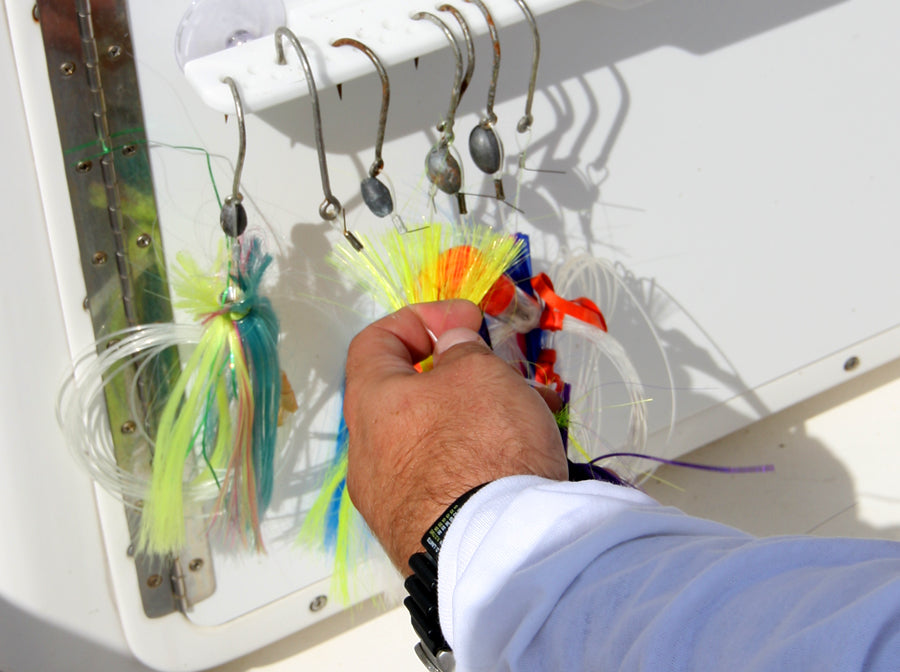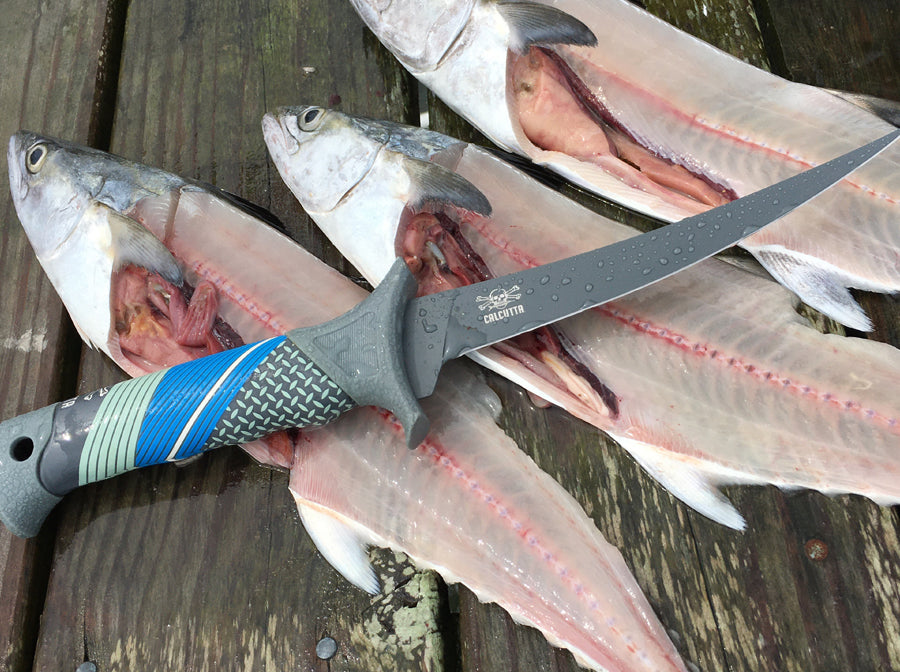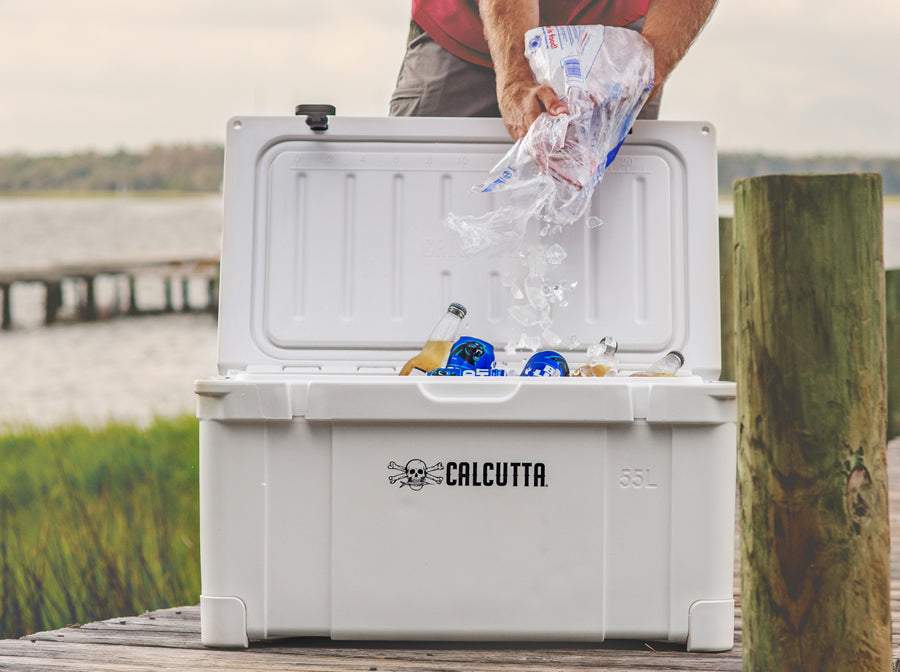Trolling 101: A Beginner’s Guide to Offshore Fishing -
Offshore trolling is one of the most exciting — and effective — ways to fill a cooler with saltwater fish. Trolling allows you to cover large areas of water and helps you find fish faster. It’s a popular method for catching a variety of gamefish, including king mackerel, mahi mahi, tuna and marlin. Whether you are planning a charter trip or heading offshore for the first time, here are some basic approaches and techniques to get you started.
Essentials of Trolling
Trolling is a centuries-old sportfishing technique that’s proven on both saltwater and freshwater gamefish. Anglers pull fishing lines that are rigged with teasers, fishing lures and bait behind a moving boat. Trolling adds action to the lures and bait, attracting hungry predator fish from a distance. Lures and baits can be pulled at different speeds and depths, ranging from the surface to near the bottom.

Best Places to Troll for Fish
It’s a common misconception that you can find fish anywhere in the ocean. In reality, fish congregate in relatively small areas, typically spots that consistently hold baitfish. A good rule of thumb: If you can find baitfish, you will also find larger gamefish.
Locate Underwater Structures
Offshore fishermen will often target underwater structures, such as shipwrecks, manmade reefs and natural reefs that are home to bait fish and gamefish. Electronic fish finders and depth finders help anglers find and mark the exact location of bottom structure. Boats will also troll along underwater ridges and drop-offs where the depth abruptly changes.
Fish Near Surface Debris
Objects floating on the surface of the ocean will often hold baitfish underneath. Fishing captains are always on the lookout for sargassum weed and other floating debris, including scrap lumber dislodged by coastal storms. They often troll alongside weed lines, which are favorite hiding spots for mahi mahi and other gamefish.
Use Birds to Find Fish
Birds are one of the most welcome sights when trolling offshore. Fishermen constantly scan the horizon for frigate birds, boobies, shearwaters, terns and other birds that are feeding on the surface of the ocean. They’re an excellent indicator that gamefish are nearby. Coastal birds are adept at finding schools of minnows and bait balls. As with baitfish, find the birds and you will often find the fish.
Build a Trolling Spread
While it’s possible to troll for saltwater fish with a single rod and reel, most anglers will employ two or more. Pulling multiple lines increases the odds of catching fish and covers a wider swath of water. When trying to locate fish, fishermen will use a spread, or trolling pattern, that incorporates a variety of lures and fresh or frozen bait fished at multiple depths and distances from the boat’s stern. Outriggers, which are basically long poles on the side of a boat, help anglers build much wider patterns and reduce line tangling. Downriggers and planing boards allow the lines to be trolled at various depths.
Trolling with Downriggers and Planers
Downriggers and trolling planers allow bait and artificial lures to be fished deeper in the water column. Attached to a boat’s stern, downriggers operate much like a small crane. Using a cable, they lower a heavy downrigger weight to the chosen depth. A fishing line is attached to the cable or downrigger weight using a heavy-duty clip. The force from a fish strike releases the fishing line from the clip, allowing the angler to reel in the fish. While they won’t work as deep as a downrigger setup, planing boards and trolling sinkers are economical and effective ways to troll below the surface.
Best Trolling Rods and Reels
Fishing rods built for trolling are often stiffer than models made for casting. Heavier actions are ideal for catching large, offshore fish such as wahoo and bluefin tuna. Rod lengths ranging from 6 feet to 7 ½ feet work well on most boats. Note: many fishing boats carry at least a few rods with lighter actions for casting to schools of mahi mahi and other fish.
Trolling reels often look and function similar to typical baitcasting reels. However, reels made specifically for offshore trolling are not designed for casting. They lack a baitcasting reel’s accuracy and ability to cast long distances. Instead, trolling reels feature stronger drags, increased line capacity and heavy-duty construction designed for battling bluewater gamefish. Trolling rod-and-reel combos feature a matched rod and reel that are designed specifically for trolling.
Trolling Lures and Rigs
Offshore trolling for saltwater gamefish usually involves large baits and brightly colored lures that can be spotted from a distance. Fishing boats carry an arsenal of plugs, spoons, and soft plastics. Ballyhoo, cigar minnows, ribbonfish and other frozen baits are often paired with iridescent dusters, soft plastic skirts and nylon trolling lures that help attract gamefish from afar. Ballyhoo rigs include a bait spring, wire nose tab and weight to help the bait move naturally underwater. Spreader bars, popular for catching tuna, allow you to pull a group of lures, giving the illusion of schooling baitfish.
Visit a Local Fishing Tackle Store
Before you head offshore, stop by a local bait and tackle store. Fishing tackle retailers are the experts when it comes to gearing up for an offshore saltwater fishing adventure. They will be happy to share their knowledge and provide trusted advice as well as up-to-the-minute fishing and weather reports. Best of all, the tackle shop will likely stock the tackle, baits and gear you need for a successful day of offshore trolling.
Book a Fishing Charter
If you don’t own or have access to a fishing boat, you can still enjoy the excitement of offshore trolling. Hiring a licensed charter boat is one of the easiest ways to go fishing off the coast. An experienced captain will maximize your chances of landing a saltwater monster. Charter boat services will take care of all the equipment and finding the fish. You only need to bring a few essential accessories to ensure you enjoy a fun day on the water.
Hiring an experienced fishing guide is also one of the best ways to learn offshore trolling. Charter boat captains and mates can explain how to build fishing rigs and offer advice on the best baits to use, ideal trolling speeds and depths. You can watch them build and manage a trolling spread, and observe how they help you land big saltwater gamefish.





